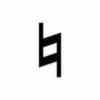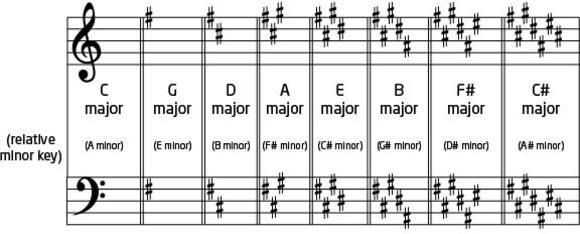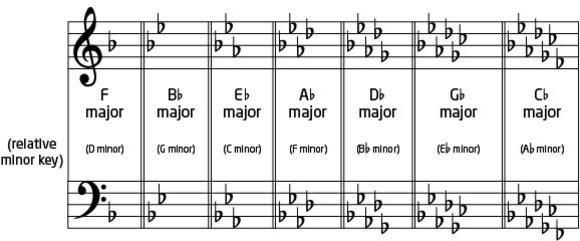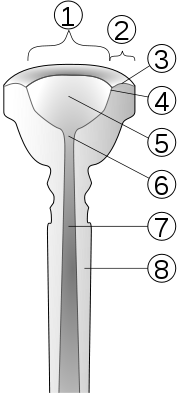Each key has a certain set of notes that make it up. These notes can be strung together in a sequence called a scale. Each scale will follow the key signature of they key it is associated with. For example the Bb scale will have the Bb key signature and the C scale will have the C key signature. Knowing at what intervals to string the notes together makes a big difference.
First you have to know about half steps and whole steps. To get from one type of note (natural, sharp, or flat) to the next note of the same type is a whole step. To get from any one type of note to the next adjacent note, that is a half step. There are exceptions, however and that is best shown to you on a keyboard.

Looking at the keyboard above you can see that every black key is a sharp or flat and every white key is natural. A jump from one white key to the next is usually a half step (same with from one black key to the next) except where there are two white keys next to each other as it is with the notes E and F as well as B and C. With these notes a whole step would be to the very next black key. In short, a whole step will always be two pitch jumps and a half step will always be just one.
So in relating that to scales I can now tell you their structure. A major scale of a key is the scale that keeps all the notes that are designated in the key signature and it's pattern is as follows.
Starting on the base note of the key (C for the key of C) which is called the 'tonic':
Whole step Whole Step Half Step Whole step Whole step Whole step Half step
Listen to C major
Each scale will have eight notes, starting on the tonic and ending on that note one octave higher.
Every key has a relative minor key that shares its key signature. The difference is in the sound given off when played. Minor keys sound darker and more mysterious. How is this possible when they have all the same notes? The structure of the way their notes are put together is different. First of all is you look back at the relative minor keys you'll notice that they have different names than their major counterparts. For example: C major is A minor. What this means for the scales is that we will start on A instead of C.
So starting on its tonic, the minor scales is built as follows:
Whole step Half step Whole step Whole step Half step Whole step Whole step
Listen to A minor
Because of the different tonics and the different interval construction, the two relative keys are able to share the same key signature but sound pretty different. I hope that answered your question.
Very Punny
A dead writer of music is de-composing.














